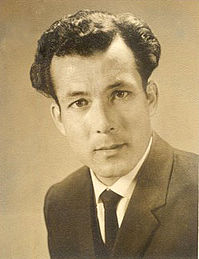Friday, September 25, 2020
Dilip Rayamajhi
Monday, September 14, 2020
Financial Markets
Thursday, September 10, 2020
History of Nepali male actors
1. The first movie made in Nepal is Aama and the actor was Shiva Shankar Manandhar
2. Actor from Maitighar was C.P Lohoni
3. Actor from Hijo Aja Bholi was Mitralal Sharma
5. Actor from Maan ko baadh was Salyan Kc
6. Biswa Basnet
7. Shiva Shrestha
8. Bhuwan Kc
9. Arjun Jung Shahi
10. Bijay Lama
11. Puran Joshi
12. Madan Krishna Shrestha
13. Hari Bansha Acharya
14. Harihar Sharma
15. Krishna Malla
16. Prakash Adhikari
17. Rabindra Khadka
18. Shrawan Ghimire
19. Ashok Sharma
20. Arjun Shrestha
21. Brazesh Khanal
22. Saroj Khanal
23. Rajesh Hamal
24. Dhiren Shakya
25. Shree Krishna Shrestha
26. Sudhamsu Joshi
27. Ganesh Upreti
28. Simant Udas
29. Dinesh Sharma
30. Lokndra Karki
31. Birendra Hamal
32. Ramesh Upreti
33. Dilip Rayamajhi
34. Sunil Dutt Pandey
35. Sushil Chhetri
36. Uttam Pradhan
37. Nabin Shrestha
38. Nikhil Upreti
39. Bishal Bist
40. Bishnu Rijal
41. Aakash Adhikari
42. Biraj Bhatta
43. Ramit dhungana
44. Suman Singh
45. Rajesh Dhungana
46. Arjun Karki
47. Subas Meche
48. Aryan Sigdel
48. Saugat Malla
49. Jeewan Luitel
50. Sabin Shrestha
51. Kishor Khatiwada
52. Mukesh Dhakal
53. Niraj Baral
54. Dayahang Rai
55. Arpan Thapa
56. Bipin Karki
57. Khagendra Lamichhane
58. Anmol Kc
59. Pradeep Khadka
60. Paul Shah
61. Salinman Baniya
62. Dhiraj Magar
Liquidity Management
Liquidity Management
Cash is considered as the most liquid assets. Cash must be in right place at right time. Liquid assets include the total currencies, foreign currencies, gold, silver, coins, government securities, first class securities etc. which are also known as liquidity of bank. An optimal liquidity management framework should address actual and potential cash needs. Safety, diversification and accessibility of cash and short term investments and alternative and contingent funding sources.
Demand of bank liquidity is due to ;
withdrawals of customer deposits
acceptable loan request
Repayment of non-deposit borrowings
Payment of interest
Operating expenses and taxes
Payment of interest
Expansion and growth
Cash reserve ratio
All sources of bank funds are known as the supply of bank liquidity. There should be proper balance between demand of bank liquidity and supply of bank liquidity. The major sources of bank liquidity are :
Customer deposits
Interest on bank loan
Revenue from sale of non-deposit services
Borrowing from money market
Sale of assets
Loan repayment
Reserve funds
Share capital
Liquidity Principles
1. Understand and categorize your cash needs, then determine your appropriate liquidity requirement.
2. Establish appropriate investment guidelines focusing on availability and safety.
3. Select investment types within guidelines that are appropriate for each cash category.
4. Establish and verify diversified Contingent funding sources.
Monday, August 31, 2020
Nepal Rastra Bank
Nepal Rastra Bank is the central bank of Nepal . It is establishes under NRB Act 2012 in 2013 Baisakh 13. It is the apex financial institution of Nepal. The main functions of central bank is to maintain price stability , balance of payment and to maintain stability of the entire financial sector to support sustainable development of Nepal.Central Bank has only the right to issue notes and coins . It maintains foreign exchange reserve. It is also know as government bank and agent of the government but it is autonomous and corporate body .








































